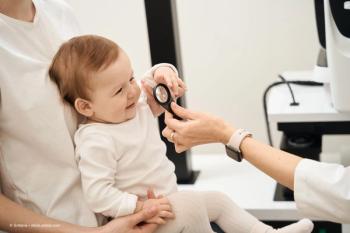
Researchers develop AI system that clarifies images of RPE, making cells visible
The system was taught quality standards by being fed more than 1400 images from different parts of the retina taken by adaptive-optics ophthalmoscopy.
National Institutes of Health (NIH) researchers have developed a custom artificial intelligence (AI) system that digitally enhances images in order to better show tissues in the back of the eye to the point of being able to make out individual cells.1 By making these retinal pigment epithelium (RPE) cells visible, researchers have created implications for early detection of disease and the monitoring of treatment response, according to the news release.
The study, “Artificial intelligence assisted clinical fluorescence imaging achieves in vivo cellular resolution comparable to adaptive optics ophthalmoscopy,” was recently published in Communications Medicine.
“AI potentially puts next-generation imaging in the hands of standard eye clinics. It’s like adding a high-resolution lens to a basic camera,” said Johnny Tam, PhD, investigator at NIH’s National Eye Institute and senior author of the study report, in the release.
The study included data gathered from 26 healthy eyes across patients, ranging from 22-63 years old.2 The AI utilization in the study was applied to images taken by ophthalmoscopes, with researchers first teaching the AI system to recognize image quality as poor, moderate, or good.1 The system was taught quality standards by being fed more than 1400 images from different parts of the retina taken by adaptive-optics ophthalmoscopy. Then, researchers fed the system corresponding images from the same retinal areas from standard ophthalmoscopy. After applying an image sharpness test, researchers found that AI-improved images were 8 times clearer than the original photos taken by ophthalmoscopy.1
“Our system used what it learned from rating the images obtained from adaptive optics to digitally enhance images obtained with standard ophthalmoscopy,” said Tam in the release. “It’s important to point out that the system is not creating something from nothing. Features that we see in RPE cells with standard imaging are there, they’re just unclear.”
Researchers utilized the injection of indocyanine green (ICG) in order to increase contrast of anatomical features to aid in sharpening the images.1
“Our ICG imaging strategy allows RPE cells to be quickly and routinely assessed in the clinic,” said Joanne Li, PhD, first author of the report and a biomedical engineer in Tam’s lab, in the release. “With AI, high quality images of the RPE cells can be obtained in a matter of seconds, using standard clinical imaging instruments.”
Another finding from the study was that although no differences in RPE cell parameters due to age were found and no RPE differences noted across ethnicities, RPE spacing was found to be larger with a smaller density in all eccentricities in female eyes when compared to male eyes. Spacing values in female eyes were on average 8% larger than in male eyes (p = 2 × 10–10, two-tailed t test), with RPE density on average as 21% lower than in male eyes (p = 1 × 10–13, two-tailed t test).2
“Results show that both the RPE cell-to-cell spacing and density measurements based on [adaptive optics-indocyanine green, or] AO-ICG images are consistent with the values previously published by other imaging studies and histology, and the highest RPE density is observed in the fovea as previously described,” the study authors stated.2 “In addition, our results demonstrate an in vivo relationship between RPE packing and age that expands upon published literature. To our knowledge, we present the largest in vivo normative dataset for RPE cell structure in living human eyes, which will be particularly important for future studies using both AO and non-AO imaging to assess the RPE.”
References:
NIH researchers supercharge ordinary clinical device to get a better look at the back of the eye. New release. National Institutes of Health. April 23, 2025. Accessed May 7, 2025.
https://www.nih.gov/news-events/news-releases/nih-researchers-supercharge-ordinary-clinical-device-get-better-look-back-eye Li J, Liu J, Das V, et al. Artificial intelligence assisted clinical fluorescence imaging achieves in vivo cellular resolution comparable to adaptive optics ophthalmoscopy. Comm Med. 2025;5:105. https://doi.org/10.1038/s43856-025-00803-z
Newsletter
Keep your retina practice on the forefront—subscribe for expert analysis and emerging trends in retinal disease management.















































